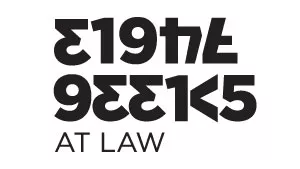- within Technology topic(s)
- in United States
- in United States
- within Corporate/Commercial Law and Finance and Banking topic(s)
The European Union Artificial Intelligence Act – Key Dates for 2025
On 12 July 2024, the European Union (EU) published its Artificial Intelligence Act (the "EU AI Act"). This marked the first major attempt at regulating artificial intelligence (AI).
The EU AI Act officially came into force on 1 August 2024, however, several requirements were slated to apply gradually, over different periods, to allow member states and affected parties to familiarize themselves with the law and prepare for compliance.
Key Dates to Watch in 2025
- 1 February 2025 – Chapters I and II of the AI Act take effect.
- 1 August 2025 – Chapter III (Section 4), Chapter V, Chapter VII, Chapter XII (excluding Article 101) and Article 78 come into force.
1 February 2025:
Per Article 113(a) of the EU AI Act, Chapters I and II will apply six months after the Act's enforcement, i.e., 1 February 2025.
What Does Chapter I Cover?
- Subject Matter
- Establishes the Act's objective as promoting the safe and responsible use of AI in the EU.
- Scope
- Explains who the Act applies to (providers, deployers, manufacturers, importers and distributors.
- Emphasizes the Act's global reach; it applies to any AI system used in the EU, regardless of its country of origin.
- Applicability
- Outlines how AI can be developed, deployed, and monitored within the EU.
- Prohibits certain AI practices and sets specific requirements for high-risk AI systems.
- Mandates transparency obligations for AI applications.
- AI Literacy
- Places an obligation on persons that develop or use AI (excluding personal, non-professional use) to ensure responsible usage and compliance.
What Does Chapter II Cover?
Prohibited AI Practices
Chapter II bans specific AI applications that pose risks to human rights, including AI systems that:
- manipulate individuals or exploit vulnerabilities;
- evaluate/classify individuals based on social behaviour or personal traits;
- predict a person's risk of committing a crime based on profiling;
- scrape facial images from the internet or CCTV footage;
- infer emotions in workplaces or educational institutions; or
- categorize individuals based on biometric data.
Exceptions exist for law enforcement under strict conditions.
1 August 2025:
Under Article 113(b) of the EU AI Act, the following provisions will take effect one year after enforcement, i.e., 1 August 2025.
Chapter III, Section 4 – Notifying Authorities & Notified Bodies
- Defines the roles and responsibilities of notifying authorities and notified bodies in compliance and enforcement.
Chapter V – General-Purpose AI Models
- Covers general-purpose AI models, which pose unique regulatory challenges due to their flexibility and widespread applications.
Chapter VII – Governance
- Establishes the European Artificial Intelligence Board (EAIB).
- Details how national competent authorities will collaborate with the Commission for enforcement.
Chapter XII – Administrative Fines & Penalties
- Outlines fines for non-compliance with the AI Act.
- Establishes the rules for enforcing penalties for violation.
- Article 101, which covers administrative fines for Union institutions, bodies, offices and agencies, has been excluded and will apply from 1 August 2026 instead.
Article 78 – Confidentiality
- All parties involved in applying the regulation must respect the confidentiality of information and data they obtain. This includes protecting intellectual property rights and trade secrets.
Conclusion
This post highlights the key regulatory milestones in 2025 that AI companies and developers must prepare for.
Early compliance with the EU AI Act is essential for businesses operating within the EU.
The content of this article is intended to provide a general guide to the subject matter. Specialist advice should be sought about your specific circumstances.



